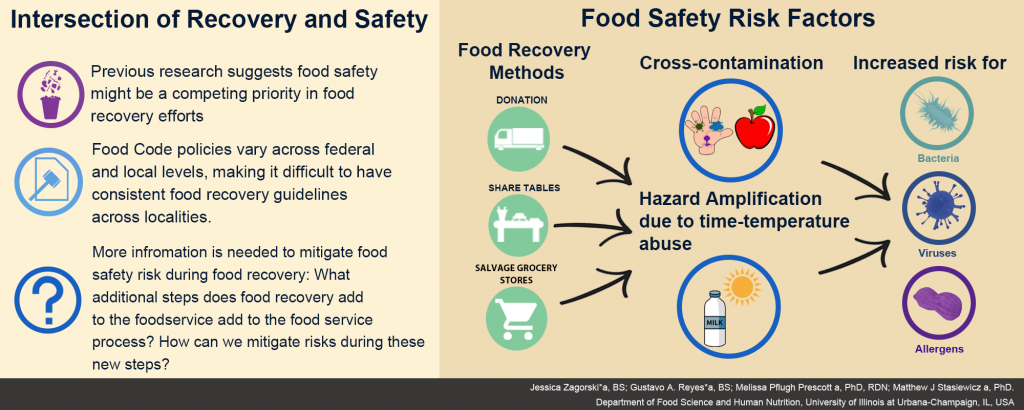Abstract
Food waste is increasingly scrutinized due to the projected need to feed nine billion people in 2050. Food waste squanders many natural resources and occurs at all stages of the food supply chain, but economic and environmental costs are highest at later stages due to value and resource addition throughout the supply chain. Food recovery is the practice of preventing surplus food from being landfill disposed. It provides new opportunities to utilize food otherwise wasted, such as providing it to food insecure populations. Previous research suggests that consumer willingness to waste is higher if there is a perceived food safety risk. Yet, segments of the population act in contrast to conservative food safety risk management advice when food is free or extremely discounted. Therefore, food recovery and food safety may be competing priorities. This narrative review identifies the technical, regulatory, and social context relationships between food recovery and food safety, with a focus on US foodservice settings. The review identifies the additional steps in the foodservice process that stem from food recovery – increased potential for cross-contamination and hazard amplification due to temperature abuse – as well as the potential risk factors, transmission routes, and major hazards involved. This hazard identification step, the initial step in formal risk assessment, could inform strategies to best manage food safety hazards in recovery in foodservice settings. More research is needed to address the insufficient data and unclear regulatory guidelines that are barriers to implementing innovative food recovery practices in US foodservice settings.
